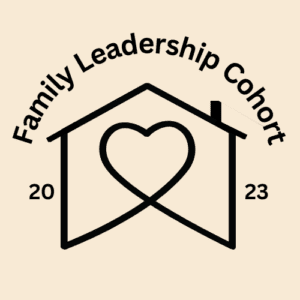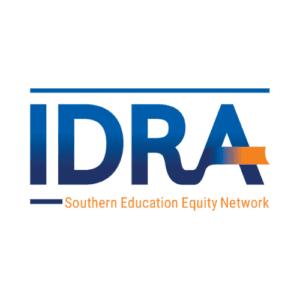
Cultural Chronicles – Significance of Mexican American Studies – Webinar Group
This group is open to anyone who joins. We are inviting all the participants of our Cultural Chronicles Webinar, and also encourage each one to invite others to join.
In the advocacy space, there are many opportunities to chat with the local, state and national media about your movement, topic or subject area you know about. Having news articles, television interviews, and other media opportunities is a great way to broadcast your message and broaden your scope of interested people.
Just as exciting of a chance it is to interview with local reporters, it’s important to remember things to keep you on track to get across your messaging. Here are 10 tips and tricks to remember when speaking with members of the media when getting interviewed.
1. Focus on key messaging
The created messages are a great place to start to think about what you want to say. Having some key phrases and talking points is always a good idea when preparing for an interview.
2. Keep it brief and to the point.
Sign-post: signal to your audience what is important.
Bridge message: if you get lost, return to your messaging.
Preempt criticism: use words like “fair,” “truth,” “common sense.”
3. If you don’t know, don’t make it up.
It is essential to be honest, and truthful about what you say. You may be representing a school district or local organization and want to be sure you are as accurate as possible.
4. Don’t repeat the opposition’s points.
Repeating the opposition’s points will only reinforce the opposition’s messaging, and the purpose of the interview is about your cause, issue, or program you are promoting.
5. Practice, practice, practice.
Practice is a good tip for a successful interview. Practicing will help you remember key phrases or essential stats you’d like to bring up while being interviewed.
6. If the conversation is not going in your favor, pivot back to the key messaging and/or key phrases.
These are instances where the conversation is getting too negative or off-topic, be sure to remember your key messaging and divert back to that.
7. Use medium language
Choose words and language that will be easier to understand since your audience may be broad depending on the media type.
8. Answer the question you were asked
Pivoting is helpful in some cases, but it is crucial to do so when faced with a question that you can give an accurate response to.
9. Don’t assume anything is “off the record.”
The term “off the record” refers to saying something that will not be published and is supposed to be confidential. It should be agreed to ahead of time. But some reporters will publish things you say “off the record,” so it is best practice to assume that nothing is off the record, and all your responses may be used.
10. Have fun and keep things positive
The last tip is to keep things light and enjoy the interview process. Whether for your organization or representing a cause you are passionate about, it is a great experience to broadcast your message.
Media coverage is an integral part of advocacy work. Since most of us are not journalists, pitching to the media and knowing what to say to reporters may feel challenging. Do I email or call them, what do I say, and how do I know if something is newsworthy?
Here are some tips to get a journalist’s attention and reach a wider audience.
Build relationships
Developing relationships with reporters are crucial to finding out who is responsible for reporting on the cause you are focused on in your area. Having that built-in relationship will only help your cause when trying to get your story picked up.
Use soundbites
Sound bites are super short statements that convey your message in a memorable way. Your group will benefit from them because they can serve as a perfect delivery vehicle for your messages.
Pitch your story
A “pitch” is a short message to entice a reporter or editor to cover your story. Below are elements your pitch should include.

This group is open to anyone who joins. We are inviting all the participants of our Cultural Chronicles Webinar, and also encourage each one to invite others to join.

Join us as we support families, caregivers and community advocates as they learn how to advocate for policy and practice changes in the Muscogee County School District.



This group is dedicated to building culturally-sustaining schools across the South. Connect to find information, share resources, and get support from advocates across the region. We support each other to defend against attacks on culturally-sustaining schools and to promote a positive vision for what culturally-sustaining schools can be across the



The Fort Bend LULAC Council 22426, started in 2021, is based in Rosenberg, Texas, and is sponsoring an Education CAFE focusing on the Lamar Consolidated ISD.



Alas/Wings es un programa de educación y salud mental para las familias inmigrantes. Alas/Wings is an education and mental health program for immigrant families.



IDRA is creating a hub of resources for educators, families and policy advocates to support those who want to promote culturally-sustaining schools and fight harmful classroom censorship policies. While the site is in development, we are sharing resources here.


The Georgia Coalition for Education Justice is a collective of students, educators, parents and advocates dedicated to advancing education justice for all children across the state. We intentionally work to bring together diverse organizations and individuals that are directly impacted by education inequity and our work to coordinate advocacy at



IDRA is creating a hub of resources for educators, families and policy advocates to support those who want to promote culturally-sustaining schools and fight harmful classroom censorship policies. While the site is in development, we are sharing resources here.



Alas/Wings es un programa de educación y salud mental para las familias inmigrantes. Alas/Wings is an education and mental health program for immigrant families.



The Fort Bend LULAC Council 22426, started in 2021, is based in Rosenberg, Texas, and is sponsoring an Education CAFE focusing on the Lamar Consolidated ISD.



This group is dedicated to building culturally-sustaining schools across the South. Connect to find information, share resources, and get support from advocates across the region. We support each other to defend against attacks on culturally-sustaining schools and to promote a positive vision for what culturally-sustaining schools can be across the



Join us as we support families, caregivers and community advocates as they learn how to advocate for policy and practice changes in the Muscogee County School District.
An Education CAFÉ is a family group rooted in a community-based organization, rather than in a single school. Its sole purpose is to collaborate with schools to improve the success of students in the community.


The Georgia General Assembly passed Senate Bill 233, which is the newest advancement of the education privatization movement in the state. Just before passage, it